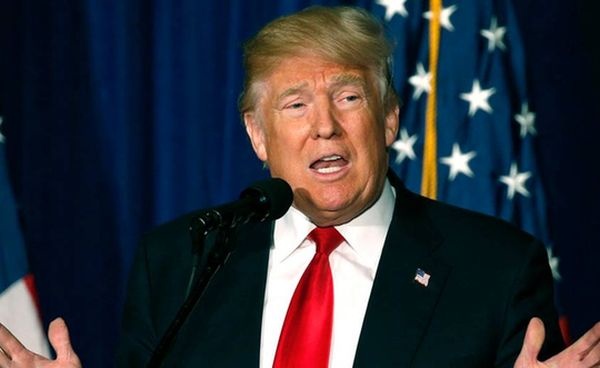"Patient Zero". How the banking crisis resembles the COVID
The connection between the collapse of American banks and the problems of the Swiss Credit Suisse is direct: the global financial market has long been integrated, although RUSSIAit does not include. The American financial crisis manifested itself not only in the bankruptcy of Silicon Valley Bank (SVB), but also in the depreciation of the banking sector by about $500 billion: banks lost 6-7% of their capitalization at once, and all the largest banks, regardless of their results and different balance sheet structure. When the markets realized that SVB would not be the last and the American regulators missed the blow, the largest European banks on March 20, compared to the beginning of the month, simultaneously lost up to 20% of their capitalization. This is reminiscent of the story of the coronavirus: when it appeared, someone got sick, there was no sense of danger. But as soon as someone became seriously ill or died, everyone instantly realized that this was a real threat to life and she was very close.
Older people and people with chronic illnesses have been hit hardest by the CORONAVIRUS. It is the same in a banking crisis: the most unprofitable banks suffer, banks with poor balance sheets or characteristics that cause customers to fear that they can lose money, a chain reaction begins. A crisis of confidence has materialized - and it had a reason.
Which banks suffer first
Not every bank experiences a crisis of confidence. There are clear criteria for distrust: poor performance, that is, several years of unprofitable activity, as in the case of Credit Suisse, or one-time large losses in securities, as with SVB. For individuals, an important criterion is the ratio of insured and uninsured deposits. For example, over 90% of SVB was not insured, while at some average regional American bank this ratio is much lower (there are more depositors, and the average deposit is smaller), and it survived.
Credit Suisse, for example, has long suffered from all the chronic banking ills: poor risk management, poor bank management, frequent management changes, and an amazing ability to get into every bad story that has happened in the market over the past five years. This is not the last bankrupt European bank, and, of course, the American market has a direct impact on the situation.
Read pioneerprodukt.by Igor Rybakov — RBC Pro: "Now is not the time for investment strategies" "I'm the boss - you're a fool."How teams turn into “spider banks” Why star employees ruin teamwork When you have to pay taxes on income from unfriendly countries twiceWhy have circumstances changed now? Someone had to get sick - not just a “patient zero”, but a dead one should have appeared. Until SVB fell with its large portfolio of deposits, people did not think about problems in the system. The fall of such a bank raised two questions. Firstly, it turned out that a bank of this magnitude could go bankrupt, and this is a serious signal. And secondly, the regulator, obviously, "overlooked" this case.
So people ask: if the regulator "overlooked" the 16th largest bank in the United States, will this be repeated with other banks? And what do they do as rational beings? They transfer deposits to the largest American banks, because they have better performance and because there is a feeling that they will definitely be protected. Exactly the same thing happened in Russia in 2009 and in 2013–2014. Sberbank and VTB then became the beneficiaries of this situation.
Did they help banks correctly?
When a financial crisis hits, like the coronavirus, it cannot be treated with homeopathic doses. In the event of a bank run ["raid on banks", a massive withdrawal of deposits by depositors], the state and financial authorities must act with great enumeration, give not just an antibiotic, but like in COVID: five drugs, and all shock, even if they give side effects. Because when it comes to saving human life, you should not think about the consequences of individual drugs. This approach has been tested by many crises.
However, in the case of SVB, the dose was even excessive. The decision to protect all deposits is a bold move that runs counter to the classical approaches of central banks. There was no need to save everyone. Why did they go for it? Firstly, the regulator overlooked this crisis and bears double responsibility for it. Before Donald Trump became president of the United States, banks with assets over $50 billion were considered systemically important. Trump, as a great liberal, raised this bar to $250 billion. And something tells me that it is no coincidence that SVB constantly did not reach this level. For systemically important banks, there are completely different requirements: a larger amount of capital, more frequent inspections and stress tests. Now, like any guilty, the American regulator wants to appease the public.
And second: any bank run is a political threat. Nobody wants to see tens of thousands of people at the Capitol or the White House on the eve of the start of a new presidential campaign.
The NATIONAL BANK of Switzerland, in turn, did what it should have done a year and a half or two years ago, but could not. He actually applied extraordinary measures, exceeded his authority, but at the same time agreed with the European Central Bank and the Bank of England. This decision was agreed, which indicates the understanding of the regulators that Europe is after all a single financial market. Writing off Credit Suisse bonds included in Tier 1 (additional Tier 1 capital; the bank stopped paying on the bonds that formed it. -) is also the right thing to do - their holders should have lost their money.
They protected the deposits at the expense of the liquidity that they will provide through the credit line. The line of 100 billion Swiss francs almost completely covers the balances on deposits, so the panic is stopped.
Credit Suisse was the weakest European bank, but there are others in the region. There is the Italian Monte dei Paschi di Siena, which should have been attached to someone ten years ago, Commerzbank has a very weak position. Today, all "chronic patients" in the European banking market are at risk of getting into intensive care with a not always guaranteed positive outcome.
What's next
covid was sometimes very well tolerated by 80-year-olds, but 35-year-olds were not. The strongest will survive in this crisis, but we do not always understand who they are.
There are almost 5 thousand banks in the usa. Now investors will run away from the regional ones. These players will be forced to merge or close, there will be consolidation. In Europe, it is needed even more than in the United States, but there is another problem: unlike the United States, there is a single European market and a European regulator, but in reality banks are regulated by national laws. Nobody wants to lose the "national champion" in their local banking market, and even let foreign managers access sensitive client information.
For sure, both in America and in Europe there will still be banks that will leave the market. Consolidation, purchase or takeover by other banks is the best scenario. Decisions can be made as early as within a year, although the implementation of these measures will take longer. Of course, government intervention is required. This will be a consolidation with the support of the monetary authorities - the US Treasury, the Federal Reserve, the ECB, national banks of individual countries.
Impact on Russia
Our depositors understand that the events in the US and European banking market have little effect on them. We cannot be infected with the virus that is now roaming Europe - we have isolated ourselves.
On the other hand, the possibility of a bank run and a certain distrust among depositors creates the fact that they now do not have complete information about the situation of Russian banks, as they did a year ago. Clients can have absolutely fantastic ideas about some banks, because they do not fully understand whether there is a loss, what it is, what the portfolio structure is.
If certain sectors of the economy sag, people may, in the absence of information, think: this bank is connected with the sagging industry, they need to take money from it. Lack of information creates monsters in the minds and increases the level of anxiety.



























































